ecosystem-guides.com
....exploring the planet's ecosystems
ARCTIC
Sea Ice
The beautiful expanse of the frozen north pole sea...
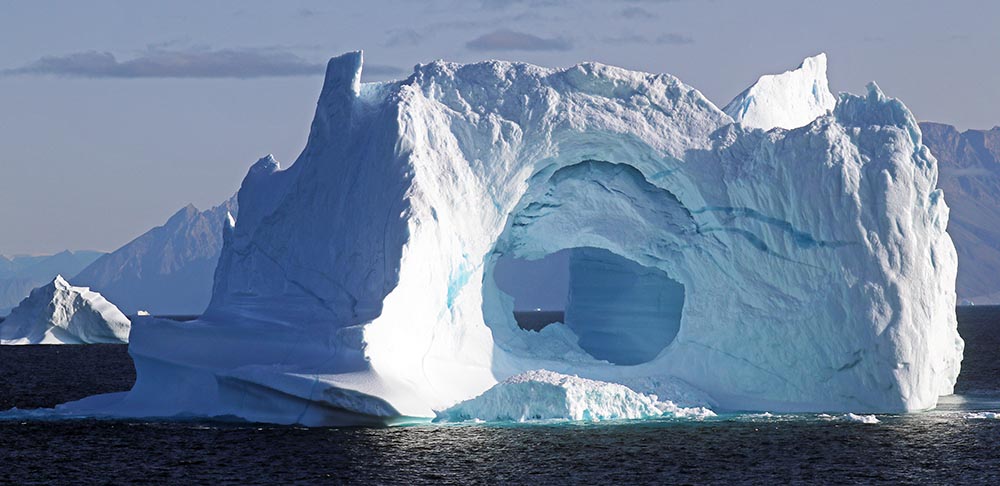 Iceberg (Arctic)
Iceberg (Arctic)In terms of origin, there are two kinds of ice: freshwater ice and sea ice. Freshwater ice falls from the sky as snow, and can build up on the ground over time into ice sheets a couple of kilometres deep. Sea ice is the top part of the ocean freezing, and is limited to a maximum thickness of just a few metres. Every fall when the temperatures start to drop again, the sea around the North Pole starts to freeze over. Wind, tide and currents can then move this ice quickly into dangerous aggregations across the sea surface. This may block access to a landing, trap a ship, or crush the boat of an inexperienced driver.
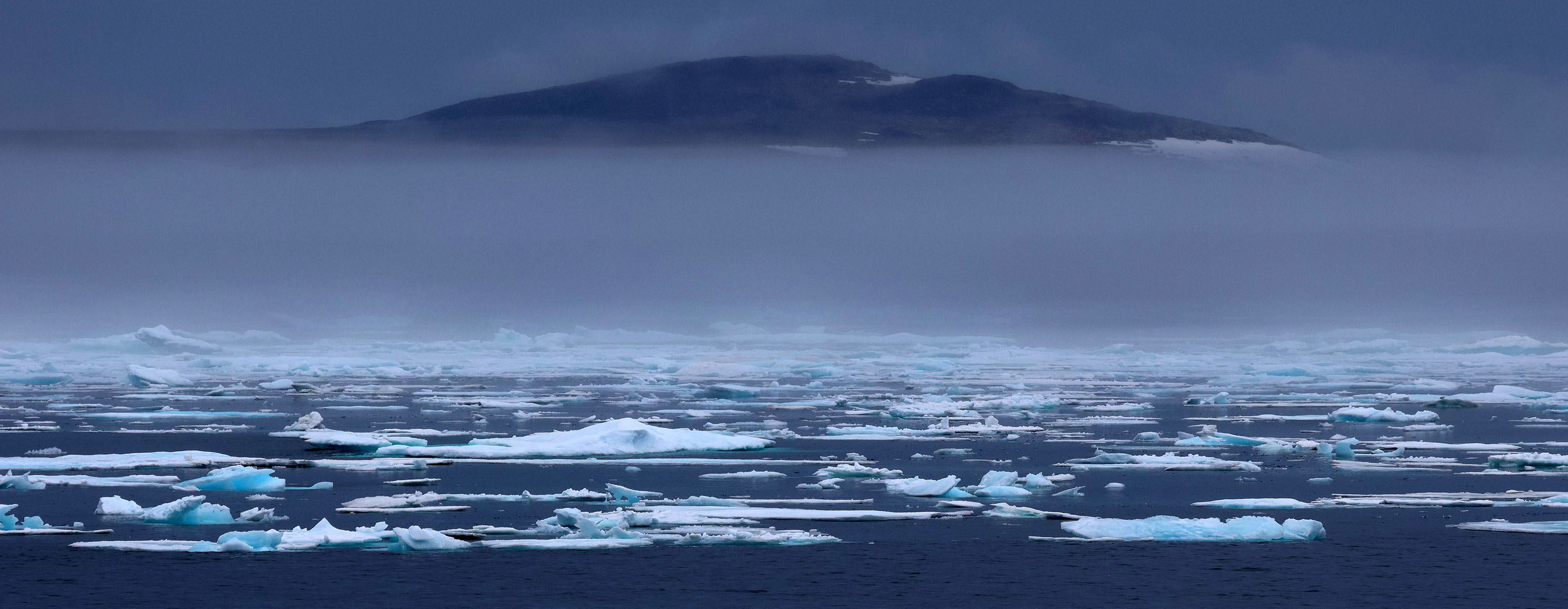
Gulls are a surprisingly diverse but overlooked group along the shores of the Arctic. Below is the Larus hyperboreus 'Glaucous Gull', one of the commonly seen species, and the second largest gull in the world.
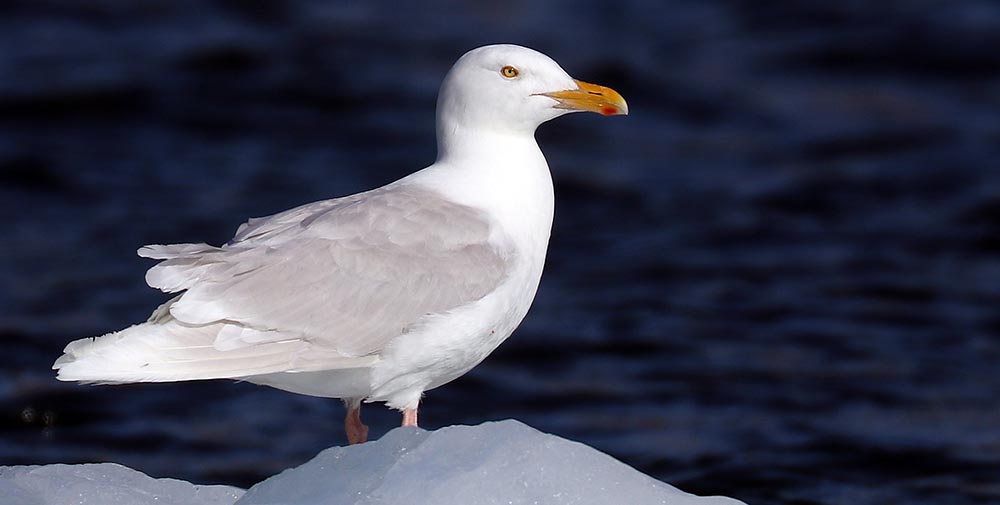 His feet must be cold.
His feet must be cold.The best known and recognized whale in the northern polar waters is the 'Humpback Whale' Megaptera novaeangliae, with it's small curved fin atop 'humped' back.
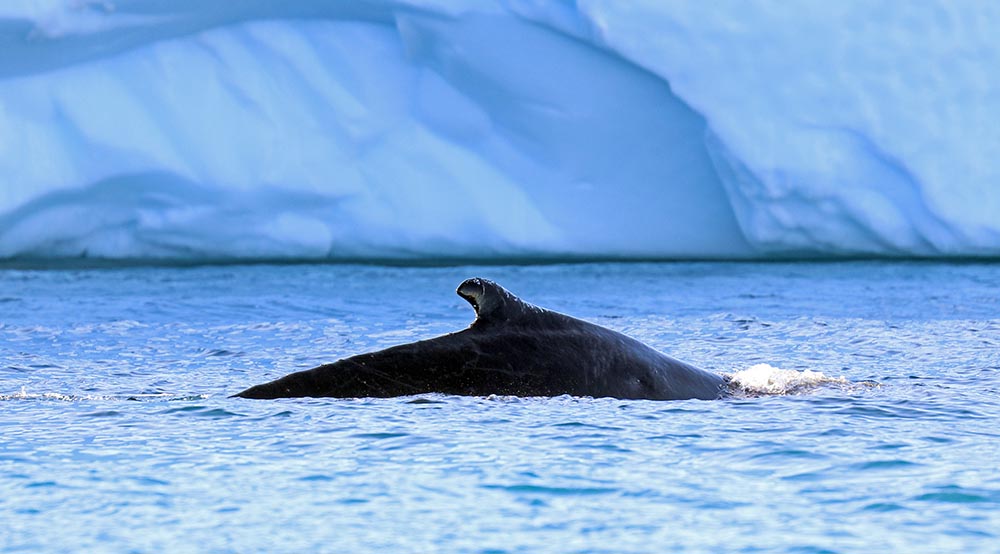 Humpback Whale (Ilulissat, Greenland)
Humpback Whale (Ilulissat, Greenland)Places to experience the Arctic ice...
To experience sea ice in the summer you have to go pretty far north, such as the east coast of Greenland and northern Svalbard. A great place to visit and SLIGHTLY more accessible if you want to experience glaciers and beautiful ice formations, is Ilulissat in western Greenland.
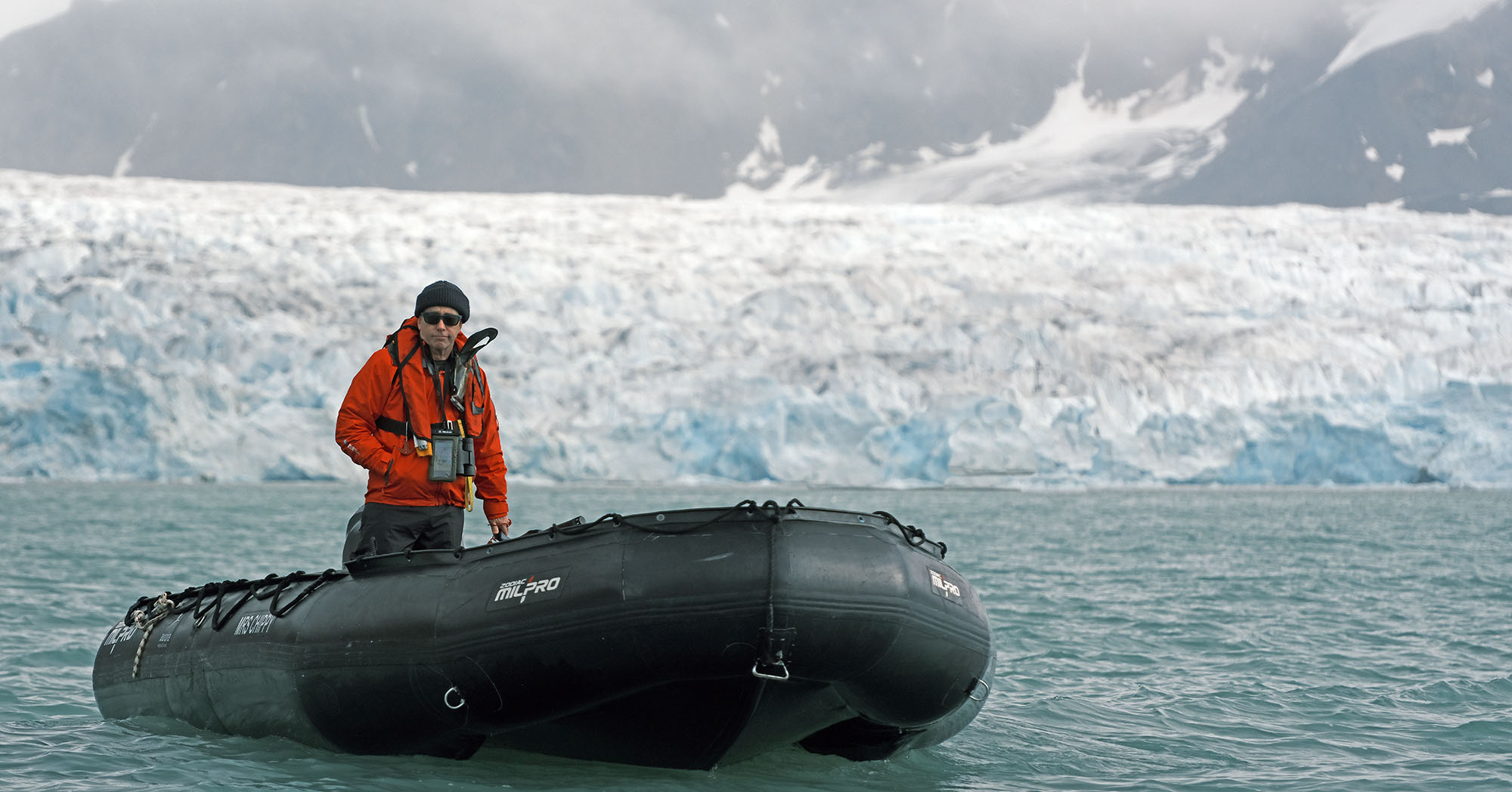 the author driving a zodiac in front of a glacier (at a safe distance!) in the Arctic
the author driving a zodiac in front of a glacier (at a safe distance!) in the ArcticOther related habitats...
Out from the coast is the Arctic Ocean. Inland from this cold seashore is the Arctic tundra and the Polar desert. At the other end of the Earth, the southern equivalents are the Subantarctic ocean, the Subantarctic seashore, and the Subantarctic tundra. Even further south are the oceans and shores of Antarctica.



